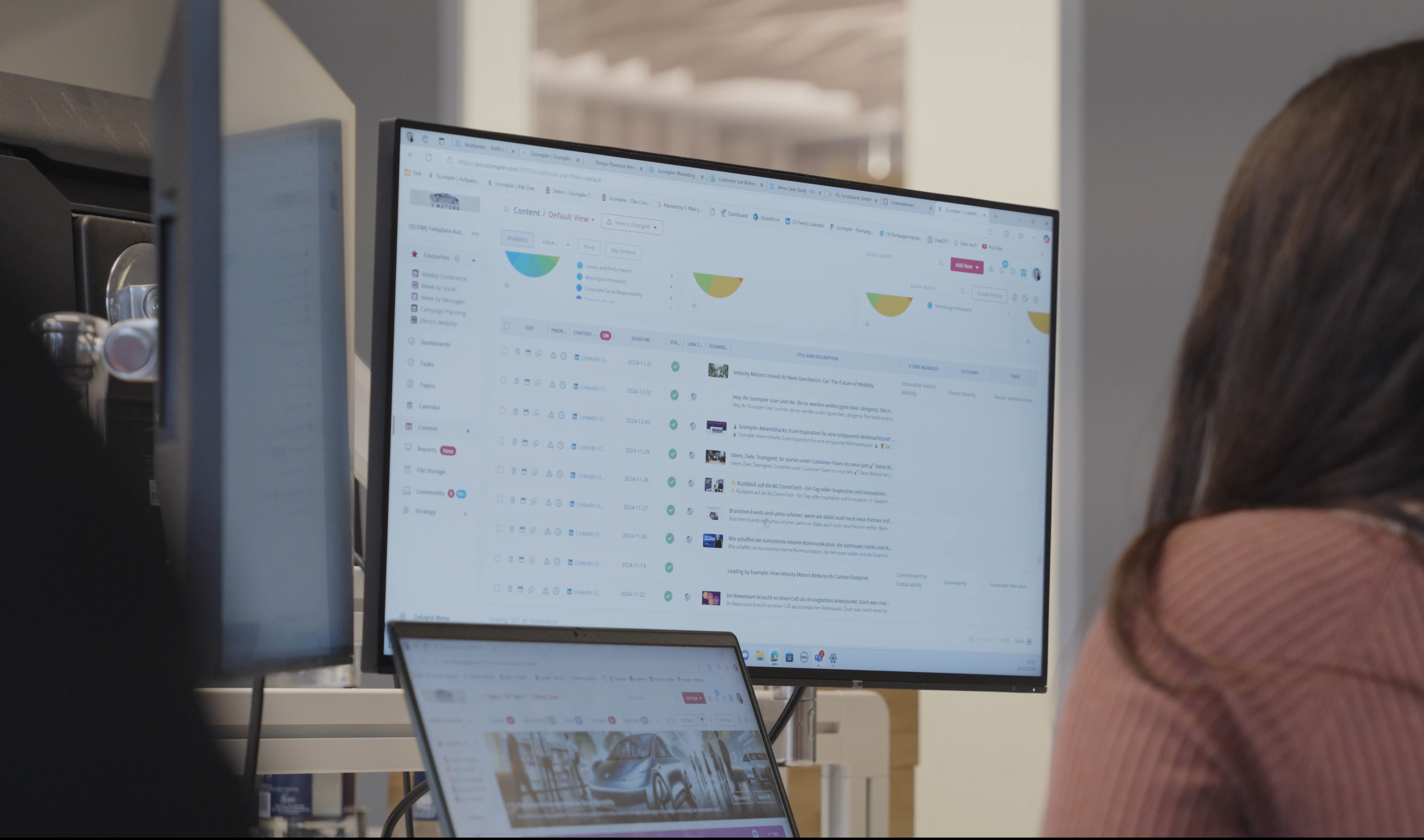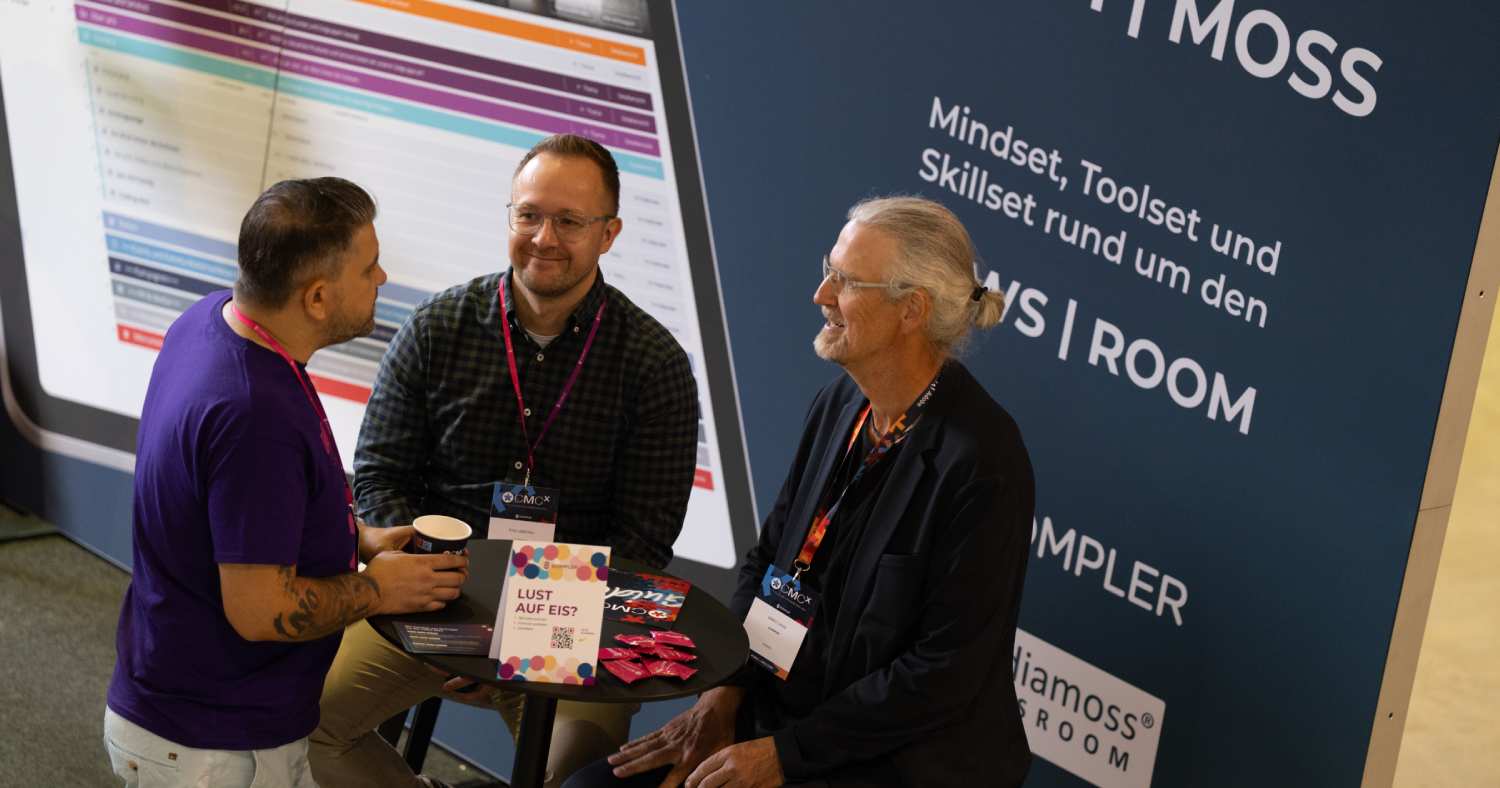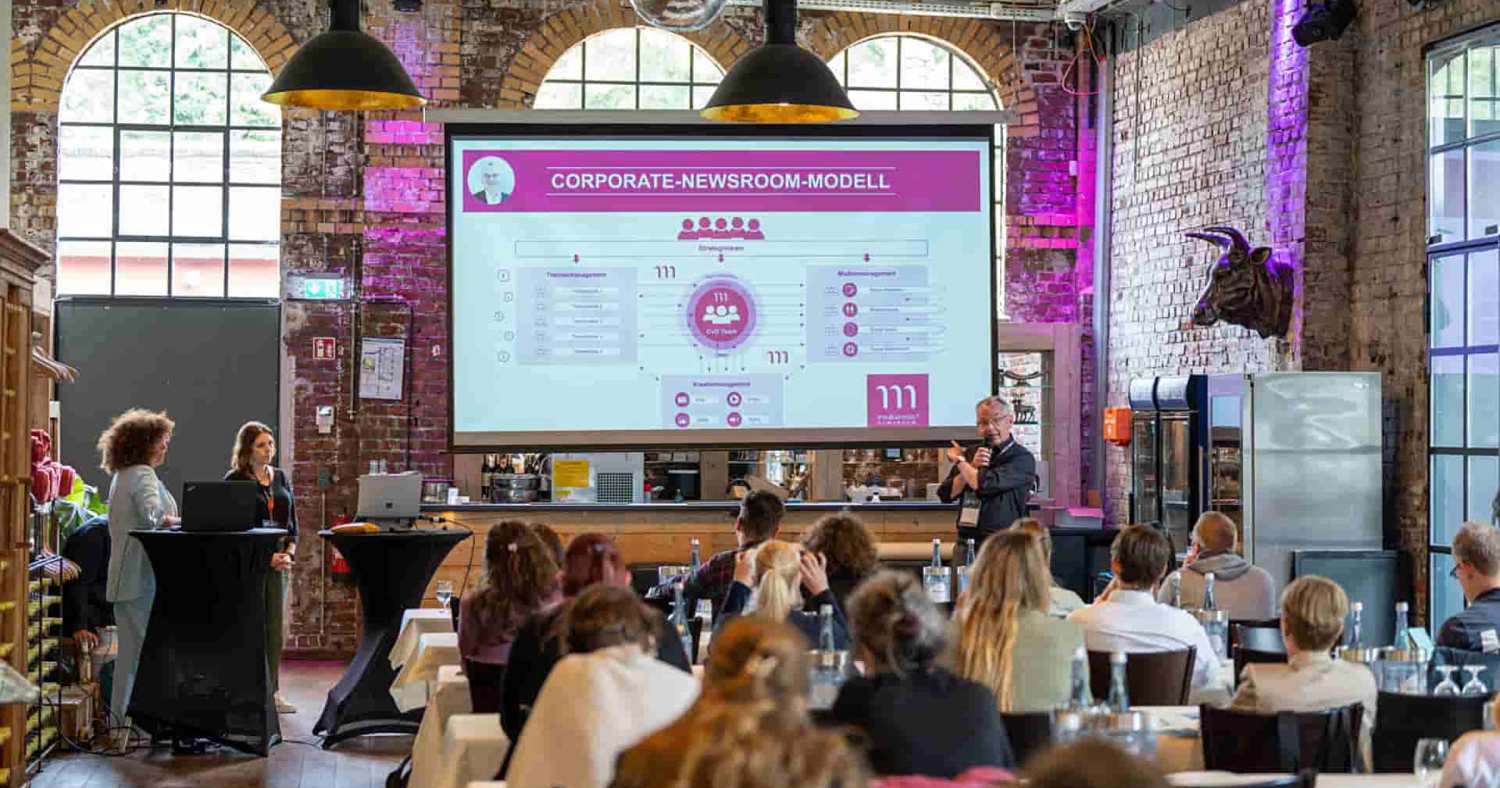From social media to content marketing: "We have to stop thinking from the channel!"
I am often asked by students, journalists, other bloggers, companies and audiences at talks what I think is the biggest mistake companies make with social media. And I usually only have one answer: that companies think from the channel! This way of thinking has been ingrained for years: the first question everyone asks is "How do I reach my target group?" And you immediately think of "channels". But that's a mistake! And a momentous one at that. Because it creates a lot of problems!
This diagram will help you understand what I mean. There, the channel is deliberately the periphery and not the center. The channels are the "media", i.e. the transmitters of the content, and are therefore also "outside". At the center, however, is the "story", which defines the relevance for the reference groups - but also the benefit for your own company. The "story" is the heart and head of all activities - and I don't just mean the "story" in the sense of "storytelling" - but also and above all the "story" in a journalistic sense. My recommendation is: think from the center outwards - and not from the outside to the center. I would like to explain why this has many strategic, conceptual and practical advantages.
The talkabout "Story Circle 2.0"

From social media to content marketing
We suggest the following to our clients and implement all our projects accordingly. And here you can find more information about content marketing and content strategy:
The story
First we define the "story". That is the central idea. Just like "Happiness" at Coca-Cola. Or "Driving pleasure at BMW". Or "Vorsprung durch Technik" at Audi. But it can also be "We help where we can", as at Telekom-hilft or the Deutsche Bahn social media team. This guiding principle can be in line with the brand (ideally it should be), but it doesn't have to be. This is because we develop it from the perspective of our reference groups - according to the "personas" and the "customer journey".
The biggest mistake with social media is to think in terms of the channel.
Mirko Lange
But at the same time, this is where we define our messages, "the moral of the story" so to speak. The trick is to unite the interests of the reference groups and those of our company in the story. But never go any further without having a good story. Because it is your guiding star - and without a guiding star you will get lost. Dead certain. (Pssst: Incidentally, the "story" is rarely: "My house! My yacht! My car! !0 reasons why I'm so great!").
The topics
We develop "themes" from this central idea. And the "guiding" idea is meant literally. We are guided by the idea, by the story. We want to tell the "story". What could the individual chapters be? What can and must we talk about in order to breathe life into the idea? What do we not need, what might even disrupt the story? Are we talking about ourselves? Or the market? Are we offering entertainment? Or "service" after all? And how do we combine everything well? This shows how important the "story" is. Because these questions cannot be answered in the abstract. The only question that counts is: Does the topic serve our story?
The protagonists
Protagonists are what bring a story to life. There is no need to use the buzzword "storytelling". We need to know who or what we are talking about. A love story needs (at least) two lovers. But does it also need a sales person? Someone who only ever wants to sell something to the loving couple? Rather no. But maybe the sales person is a good friend of the family and brings the lovers together? Then it makes sense again. Then he will be useful and also likeable. The only thing that matters is that you assign the roles correctly!
The formats
It becomes concrete with the formats. This is where the actual staging begins. This is because you can stage the topics and protagonists in new ways again and again. The story remains the same. The messages don't change either. But they vary how they say it. Sometimes they sing it, sometimes they play it, sometimes they speak briefly, sometimes at length, sometimes upbeat and sometimes more solemn. The great thing is that there are so many new formats thanks to social media. Play with them.
Content must be based on the story. Not according to the channel.
Mirko Lange
The channels
And the channels come at the very end. At. the. very. end. At the end. It doesn't play a "central" role. It's just the distribution. And the great thing is: it doesn't cost you any more to distribute good content via 20 channels than if you only do it via one. This means you no longer have to think about which channel is the best way to "reach your target groups". Because the answer is: via many more than you think! And maybe 70% of your target group is on Facebook and only 10% on Google+ - but you can't care which channel the order comes through, can you?
The contact
And there are two important findings here. Firstly, there are four different types of contact: "Pull", "Match", "Push" and "Meet". With "Pull" it becomes clear how many search engines there are: Not just Google. People search like crazy! And that's why it makes sense to process the content in as many formats as possible (channel-appropriate) and post it on the various services. "Match" means meeting the exact interests of a multiplier, "push" means, as always, the topic of "paid media" (but also "mailings" and, last but not least, the topic of "meet". This should not be underestimated. A meeting "in real life", be it at a trade fair or a conference, is still the best place to get content "to the man" (or woman). What do you think? Is this a helpful addition? I look forward to a rating, comments and shares!
The problem of "channel-centric"
This approach offers very clear benefits. I will just mention the four most important ones:
The Facebook trap
If you think of a channel first, you think of Facebook first. Sure, it's the network with the greatest reach. At least in B2C. But developing content just for Facebook is stupid not smart. That restricts you. You can't deal with more complex things on Facebook. You can't structure texts or make them easy to read. The lifespan of a Facebook post is short: once it's out of the timelines, it's gone. Forever. You can no longer find it. And it doesn't appear in Google either.
Should I only offer my guests soup just because Facebook doesn't have knives?
Mirko Lange
Or think of Xing if you are more active in the B2B sector. The same applies here. If I'm a chef, then I want to cook my guests what they like. And not what the room in which I serve my guests allows: should I really only offer my guests "soup" just because Facebook only has spoons but no knives for safety reasons?
The content trap
If you think in terms of "Facebook", then you naturally ask yourself: What can I post on Facebook? And then you develop content for Facebook. There are also enough rules, enough tips on "what works" and what doesn't. And if you then serve a second network, there are different rules there too. So you then create extra content for the other network. And then other content for yet another channel. And your colleagues do the same. PR then creates content for the press release - which is also a separate channel. And marketing for advertising. And so on. And everyone creates the content again and again. It's much more efficient to create the content once and then just adapt it for the channels!
The limitation trap
If you proceed as described above, you will inevitably end up reducing the number of channels. Because every additional channel costs you time and causes you effort. I hear customers tell me this all the time. But that's against your interests! Because "more channels" doesn't just mean "more reach", it also means greater variety. Above all, in many cases it makes sense to select very specific channels because in certain cases they have a high affinity for individual target groups.
The benefits of "content-centric"
If you think in terms of content and story, you have a very clear benefit. Let me just mention the four most important ones:
Strategy
First of all, you have a "strategy". From the very first step, you have an idea, a goal, something that helps you to distinguish the important from the unimportant. For example, you don't choose your topics based on who is shouting the loudest at the moment. Or what you like at the moment, or what you think your boss will like. But according to what will help you achieve your goal. And what doesn't fit - leave it out!
What do I post? What conveys my message or what gets lots of likes?
Mirko Lange
Wealth
Another advantage is that you will never say: I don't know what to write. The ever-changing combination of topics, protagonists, formats and channels gives you an inexhaustible potential of "content". Don't be afraid of getting bored. The story of the poor girl who falls in love with a prince has already been told a million times. And people never tire of hearing it!
Many channels
With this approach, you can also throw the nice (but completely absurd) idea of "reducing the channels" in the bin. I hear that again and again. That's wrong. The opposite is the case! You don't need to communicate via fewer channels, you need to communicate via more channels. At least if the formats allow it. The problem with channel thinking is that you want to develop your own content for each individual channel. And you have to - of course, if you think in terms of the channel. But if you think in terms of content, then you develop the content first - and if you already have it, what's wrong with distributing it across every possible channel? You must really want to do this.
If you have designed the content correctly, you will also realize that it is not only good for Facebook! How could it be otherwise! If you have developed relevant topics for your target groups, it would be downright absurd, indeed downright wasteful, to offer it only on Facebook. There it has a lifespan of a few days, sometimes even just hours, and often only a small percentage of your fans see it. No! Take the content and distribute it via every other channel possible. It doesn't matter if it's offline!
There is no greater use than making the wrong thing really good.
Mirko Lange
Why shouldn't you use a good blog article in a customer magazine? Or prepare it as a specialist article for the press? Or as a case for a presentation at a conference! And then suddenly the effort for content production is worth it!
Conclusion
So: get involved. Forget the channels and think about the story! And by the way, this is not a question of B2B or B2C. On the contrary: there is 100 times more to tell in your B2B area than in the B2C area - and with good content you can position yourself much better in your area as a competence leader than a consumer goods manufacturer could. And think about it: a toilet paper manufacturer will surely run out of topics sooner, won't they? Have fun!






